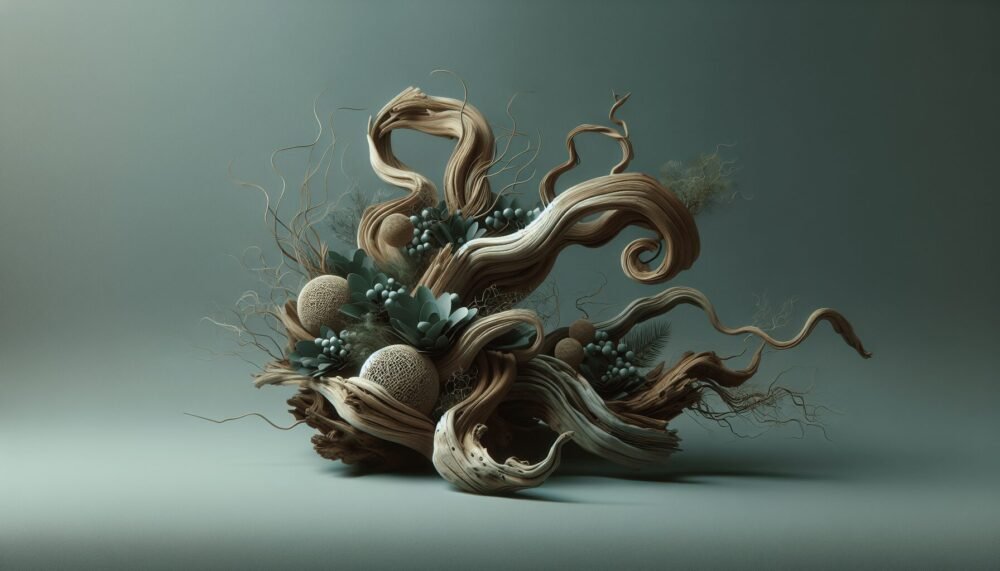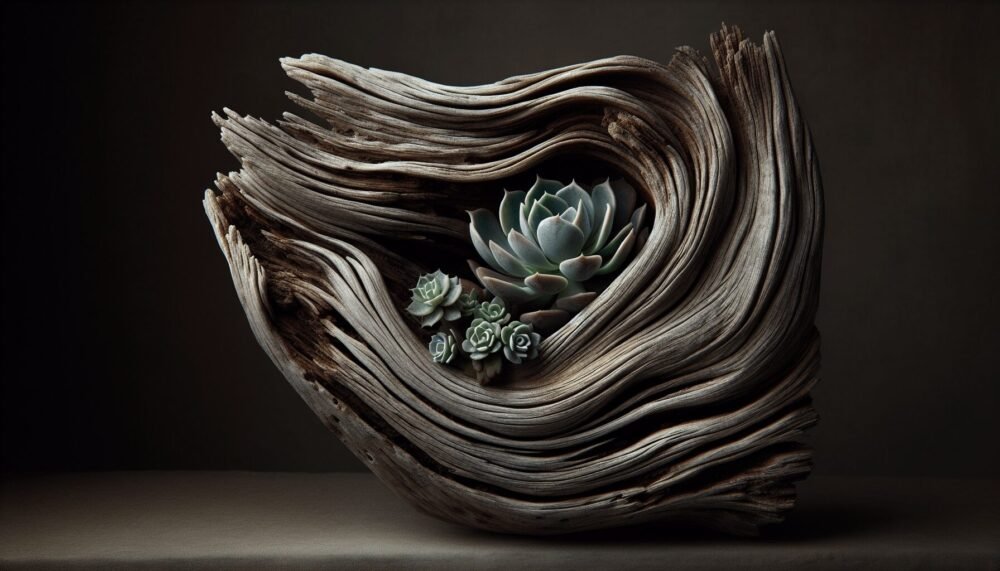Ever wondered what makes Driftwood Nurseries so unique? If you’re passionate about gardening or simply curious about sustainable plant care, Driftwood Nurseries offer a treasure trove of insights and benefits that you might not have anticipated. Let’s walk through the many facets of Driftwood Nurseries and explore what sets them apart.
What Is Driftwood Nursery?
To start, Driftwood Nursery is not your average plant nursery. Often characterized by the incorporation of driftwood in both aesthetic and functional capacities, these nurseries focus on sustainable and organic practices. Driftwood, naturally weathered wood that washes ashore, is utilized in various forms within these nurseries, adding a touch of the coastal wilderness and contributing to eco-friendly gardening.
Origins and History
Driftwood has been used for centuries in various cultures, but its incorporation into nurseries is a relatively modern phenomenon. The unique textures and forms of driftwood make it functional and aesthetically pleasing, providing endless creative gardening possibilities. This trend started gaining popularity in coastal areas where driftwood is readily available but has since expanded to various regions due to its environmental benefits.
Why Choose Driftwood?
Driftwood offers numerous advantages:
- Environmentally Friendly: Utilizing driftwood reduces the need for processed timber, promoting sustainable practices.
- Aesthetic Appeal: Its unique shapes and textures can enhance the overall look of your garden.
- Functional Uses: Can be used in garden structures, planters, and even as natural mulch.
Benefits of Using Driftwood in Nurseries
Driftwood offers several advantages that can elevate your gardening experience to the next level.
Sustainability
Sustainability is one of the primary benefits of using driftwood. Driftwood is a natural, renewable resource that requires minimal processing. This reduces its carbon footprint compared to processed or synthetic materials.
Soil Improvement
Driftwood, when used as mulch, can improve the soil quality by retaining moisture, moderating temperature, and adding organic matter as it decomposes. This can be particularly beneficial for plants that thrive in well-drained, enriched soils.
Aesthetic Appeal
Driftwood’s natural, rustic appearance adds a unique, coastal charm to any garden. Whether you are planning a landscaped garden or a small balcony setup, driftwood can be used creatively to enhance the visual appeal.

How to Incorporate Driftwood in Your Nursery
There are multiple ways to introduce driftwood into your gardening space, maximizing both functionality and beauty.
Planting Beds and Borders
Driftwood can be used to define planting beds, creating natural barriers that prevent soil erosion and help retain moisture.
Step-by-Step Guide:
- Select Driftwood: Choose pieces that are long and relatively straight for creating borders.
- Prepare Ground: Outline the area where you want the planting bed.
- Place Driftwood: Position the driftwood pieces around the outline, pressing them firmly into the soil.
- Fill with Soil: Once the borders are in place, fill the planting bed with high-quality soil.
Driftwood Planters
Using driftwood as planters can create stunning centerpieces. The unique shapes can be hollowed out to hold soil and small plants, creating a natural, rustic look.
Driftwood in Water Features
Driftwood can also be incorporated into water features like ponds or fountains, adding an organic element to your garden’s landscape.
DIY Driftwood Projects
For those who enjoy DIY projects, driftwood offers endless possibilities. From furniture to garden ornaments, driftwood can be crafted into unique items that enhance your garden space.
Types of Driftwood and Their Uses
Not all driftwood is created equal. Different types offer varied benefits and aesthetic appeals.
| Type of Driftwood | Origin | Best Uses | Durability |
|---|---|---|---|
| Softwood | Pine, Fir | Planters, Small Decorative Pieces | Moderate |
| Hardwood | Oak, Maple | Garden Structures, Furniture | High |
| Exotic Wood | Teak, Mahogany | High-end Decorative Items | Very High |
Understanding the type of driftwood and its properties can help you choose the right pieces for your specific needs.

The Environmental Impact of Driftwood
Driftwood nurseries promote a greener earth. They play a crucial role in recycling and sustainability, reducing deforestation, and promoting cleaner oceans.
Ocean Health
Removing driftwood from shorelines can sometimes help declutter coasts, creating cleaner habitats for marine life. However, it’s essential to collect driftwood responsibly, ensuring that vital ecosystems are not disrupted.
Carbon Footprint
By opting for driftwood instead of new lumber, you reduce the demand for freshly cut timber, thereby lowering carbon emissions associated with logging and timber processing.
Soil Conservation
Using driftwood in your garden can promote healthier soil, reduce erosion, and enhance plant growth, contributing to a sustainable ecosystem in your backyard.
Driftwood Nursery Plants
Certain plants thrive particularly well in driftwood nurseries. The combination of driftwood’s natural elements and the specific growing conditions created by it can benefit a wide range of plant species.
Succulents and Cacti
These plants are perfect for driftwood planters due to their low water requirements and ability to thrive in well-drained soil. Driftwood provides an airy, yet stable structure that complements their growing needs.
Ferns and Mosses
If you prefer a lush, green look, ferns and mosses pair well with driftwood. The moisture-retaining properties of driftwood and its decaying organic matter can create a thriving environment for these plants.
Coastal Plants
Plants that naturally grow near coastal areas, such as sea oats and salt-tolerant grasses, can complement the driftwood’s aesthetic and conditions.
| Plant Type | Characteristics | Benefits |
|---|---|---|
| Succulents | Low water requirement | Ideal for driftwood planters |
| Ferns | Moisture-loving | Thrive in driftwood’s organic matter |
| Coastal Grasses | Salt-tolerant | Aesthetic complement to driftwood |
DIY Driftwood Nursery Setup
Setting up your own driftwood nursery is easier than you might think. Here’s a simple guide to get you started.
Materials Needed
- Driftwood Pieces
- High-Quality Soil
- Seeds or Plants
- Garden Tools (Spade, Rake, etc.)
Steps to Set Up
- Plan Your Layout: Decide where to place planting beds, water features, and planters.
- Collect Driftwood: Make sure to clean and treat the driftwood to remove any pests.
- Prepare Soil: Use nutrient-rich soil to fill your beds and planters.
- Plant Selection: Choose plants that thrive in your local climate and the conditions provided by driftwood.
- Arrange and Decorate: Place the driftwood and plants in your desired layout, ensuring adequate space for growth.
- Maintenance: Regularly water and tend to your plants, and monitor the driftwood for any signs of decay.
Maintenance of Driftwood
Keeping your driftwood in top shape requires some regular maintenance.
Cleaning
Driftwood should be periodically cleaned to prevent algae or mold build-up. A simple rinse with water and scrubbing with a soft brush should suffice.
Inspection
Regularly check for any signs of decay or pests. Driftwood is generally resilient but can succumb to natural elements over time.
Treatment
Consider treating your driftwood with a natural preservative to extend its lifespan. This can help maintain its structural integrity and appearance.
Driftwood Nurseries and Sustainable Gardening
Driftwood nurseries are not just a trend but a move towards more sustainable gardening practices.
Reducing Waste
The use of driftwood helps repurpose what would otherwise be waste material, promoting a circular economy.
Promoting Biodiversity
Driftwood can create microhabitats for various plants and insects, increasing biodiversity in your garden.
Cost-Effective
Repurposing driftwood can be more cost-effective than buying new materials, making it an excellent choice for budget-conscious gardeners.
Common Mistakes and How to Avoid Them
Starting a driftwood nursery can be an exciting project, but it’s important to avoid some common pitfalls.
Overcrowding
One mistake many new gardeners make is overcrowding their plants. Ensure there is enough space for each plant to grow and thrive.
Poor Placement
Driftwood should be placed in areas where it won’t be submerged in standing water for extended periods, as this can accelerate decay.
Ignoring Soil Quality
The soil used in your driftwood planters should be of high quality and suitable for the types of plants you are growing.
| Mistake | Consequence | Solution |
|---|---|---|
| Overcrowding | Stunted plant growth | Space plants adequately |
| Poor Placement | Rapid decay of driftwood | Ensure proper drainage |
| Ignoring Soil Quality | Poor plant health | Use nutrient-rich soil |
Future of Driftwood Nurseries
As we move towards more sustainable lifestyles, driftwood nurseries are poised to gain even more popularity.
Technological Advancements
New technologies in sustainable gardening are continually emerging, offering innovative ways to enhance the use of driftwood in nurseries.
Growing Community
The driftwood nursery community is growing, offering more resources and shared knowledge for beginners and experts alike.
Environmental Initiatives
Increased awareness and environmental initiatives may also support the driftwood nursery trend, pushing it further into the mainstream.
Conclusion
Driftwood nurseries offer a unique blend of sustainability, aesthetic appeal, and practicality. They are a testament to innovative gardening that respects and harmonizes with nature. Whether you are looking to start a new gardening project or enhance your existing space, incorporating driftwood can provide numerous benefits and joy. Explore the possibilities and let your creativity flourish in a driftwood nursery.



